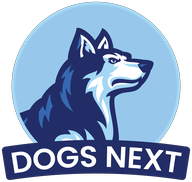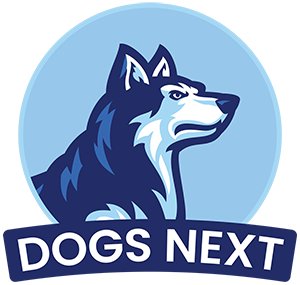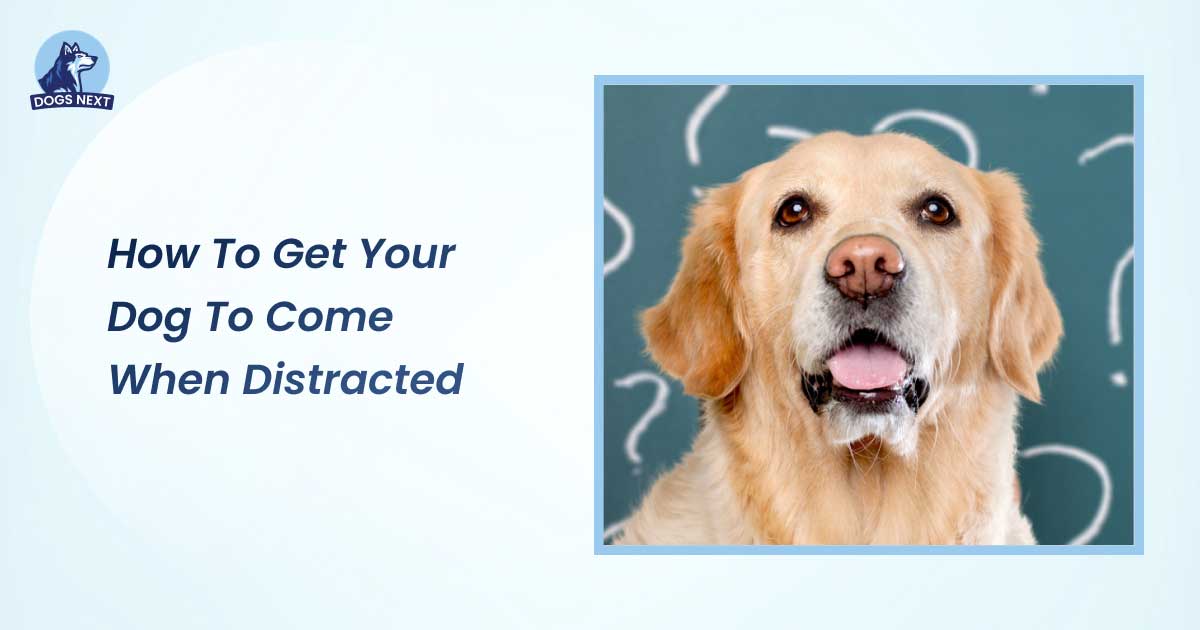To get your dog to come when distracted, use patience and consistency. Start with basic training and gradually increase distractions.
Training your dog to come when distracted can be challenging. Dogs get easily sidetracked by sights, sounds, and smells. But with dedication, you can teach your furry friend to obey your call, even in the face of distractions. This skill is vital for your dog’s safety and your peace of mind.
Imagine your dog running towards a busy road or into a dangerous situation. A strong recall command can prevent accidents. In this guide, we’ll explore effective techniques and tips to help you achieve this. Whether you’re a new dog owner or looking to improve your pet’s behavior, these steps will make training easier and more successful.
Effective Recall Training Techniques
Training your dog to come when called, even with distractions, can be a challenge. Effective recall training techniques are essential to achieve this. These methods ensure your dog responds to your command promptly, regardless of the environment. Let’s explore these techniques in detail.
Start Training In A Low-distraction Environment
Begin recall training for dogs in a calm and quiet area. This helps your dog focus on you without distractions. A low-distraction environment can be your living room, backyard, or a quiet park.
Follow these steps to start:
- Use a consistent command: Choose a word like “come” or “here” and stick to it. Consistency helps your dog understand what you want.
- Positive reinforcement: Reward your dog with treats or praise when they come to you. This makes the behavior enjoyable for them.
- Short training sessions: Keep sessions brief, around 5-10 minutes. This prevents your dog from getting bored or tired.
Here is a simple table to summarize these steps:
| Step | Description |
| Consistent Command | Use the same word each time |
| Positive Reinforcement | Reward with treats or praise |
| Short Sessions | Keep training brief |
Starting in a low-distraction environment builds a strong foundation. It ensures your dog learns the command before facing dog training distractions.
Gradually Introduce Distractions And Increase Distance
Once your dog responds well in a quiet setting, gradually introduce distractions. This helps your dog learn to focus on you, even with other stimuli present.
Here are steps to follow:
- Introduce mild distractions: Start with low-level distractions such as a toy or another person at a distance.
- Increase the distance: Slowly increase the distance between you and your dog while giving the recall command.
- Higher-level distractions: Gradually introduce more challenging distractions like other dogs or busy environments.
Use rewards and praise throughout these stages. This reinforces the desired behavior.
Here is a progression plan:
| Phase | Distractions | Distance |
| Phase 1 | Mild distractions (toy/person) | Short distance (5-10 feet) |
| Phase 2 | Moderate distractions (park) | Medium distance (10-20 feet) |
| Phase 3 | High distractions (other dogs) | Long distance (20+ feet) |
By gradually increasing distractions and distance, you improve dog recall with distractions. This makes your dog reliable in various situations.
Using Positive Reinforcement
Training your dog to come when called, especially when distracted, can be challenging. Using positive reinforcement is one of the most effective methods to achieve this. Reward-based dog training not only strengthens the bond between you and your dog but also makes learning fun for them. Let’s explore how you can use positive reinforcement to get your dog to come when distracted.
Reward With Treats, Toys, Or Praise When They Respond
Positive reinforcement in dog training involves rewarding your dog when they exhibit the desired behavior. To get your dog to come when called, especially in distracting environments, you can use various rewards such as treats, toys, or praise. Here are some effective ways to use these rewards:
- Treats: Use high-value treats that your dog loves. Small, soft, and smelly treats work best. Reward your dog immediately when they come to you.
- Toys: If your dog loves playing with toys, use them as a reward. You can use a favorite toy to play a quick game of fetch or tug-of-war.
- Praise: Some dogs respond well to verbal praise and petting. Use a happy and excited tone to praise your dog when they come to you.
Here’s a simple table to summarize the types of rewards:
| Type of Reward | Description |
| Treats | High-value, small, soft, and smelly treats |
| Toys | Favorite toys for quick play sessions |
| Praise | Verbal praise and petting |
Using these rewards consistently helps reinforce the behavior you want. Ensure you have a variety of rewards available to keep your dog motivated. The goal is to make coming to you the most rewarding experience for your dog.
Maintain Consistency In Rewards To Reinforce Behavior
Consistency is key when it comes to reinforcing dog recall behavior. When you consistently reward your dog each time they come to you, they learn that this behavior is always worth their effort. Here are some tips for maintaining consistency:
- Always reward: Each time your dog comes when called, reward them. This helps them understand that coming to you is always beneficial.
- Use a variety of rewards: Mix up the rewards to keep your dog interested. Sometimes use treats, other times use toys or praise.
- Train in different environments: Practice recall in various settings. Start in a quiet place, then gradually move to more distracting environments.
Consider the following table for a quick reference on maintaining consistency:
| Consistency Tips | Details |
| Always reward | Reward every successful recall |
| Variety of rewards | Alternate between treats, toys, and praise |
| Different environments | Practice in both quiet and distracting places |
Maintaining consistency in rewards ensures your dog understands the importance of coming when called. This helps in reinforcing dog recall behavior effectively. Over time, your dog will learn that responding to your call is always in their best interest, no matter the distraction.
Practice Recall Commands Regularly
Getting your dog to come when distracted can be challenging, but with regular dog recall practice, it becomes achievable. Practicing recall commands regularly is essential to ensure your dog responds reliably. By consistently reinforcing the recall command in different situations, you help your dog understand that coming to you is always the best choice, regardless of distractions.
Use The Recall Command Frequently In Daily Interactions
Integrating the recall command into your daily interactions with your dog is crucial. This means using it not just during training sessions but throughout the day. Make the recall command a part of your regular dog recall practice.
Here are some tips to help you include the recall command in daily life:
- During playtime: Call your dog to come to you before throwing a ball or toy. Reward them with the toy as a positive reinforcement.
- Meal times: Use the recall command before feeding your dog. This makes the command associated with a positive outcome.
- Walks and outings: Practice the recall command during walks in the park or backyard. Start in low-distraction areas and gradually move to more distracting environments.
- Random moments: Call your dog randomly throughout the day. Reward them with treats, praise, or playtime to reinforce the command.
Maintaining consistent recall training ensures your dog understands the importance of the command. Regularly practicing in different scenarios helps your dog respond even when distracted. Remember, consistency is key. The more you use the recall command, the more ingrained it becomes in your dog’s behavior.
Avoid Punishment To Keep The Command Positive
It’s vital to keep the recall command a positive experience for your dog. Avoid punishment or negative reinforcement, as this can make your dog hesitant to come to you. Training recall command daily should be a fun and rewarding activity.
Consider these points to maintain a positive recall training:
- Use high-value rewards: When your dog responds to the recall command, reward them with their favorite treat or toy. This makes the command exciting and worth responding to.
- Avoid frustration: If your dog doesn’t respond immediately, stay calm. Refrain from showing frustration or anger. Instead, try to identify what might be distracting them and gradually increase the difficulty of the recall command.
- Short, fun sessions: Keep training sessions short and engaging. Five to ten-minute sessions are usually sufficient. This keeps your dog enthusiastic and prevents them from losing interest.
- Positive tone: Use a cheerful and encouraging tone when calling your dog. Dogs respond better to positive tones and are more likely to come to you.
By consistently using positive reinforcement, you reinforce the recall command as a desirable behavior. This approach ensures that your dog is always eager to come to you, even when distractions are present.
Frequently Asked Questions
How Can I Train My Dog To Come When Distracted?
Start with basic commands in a quiet area. Gradually introduce distractions. Use high-value treats and positive reinforcement. Be consistent and patient.
What Techniques Help With Recall Training?
Use a long leash for safety. Practice in various environments. Reward your dog immediately when they respond. Keep training sessions short and fun.
Why Doesn’t My Dog Come When Called?
Distractions might be too strong. Ensure your dog finds the reward enticing. Practice regularly in different settings to improve reliability.
Can Older Dogs Learn Recall Commands?
Yes, older dogs can learn recall. Use patience and positive reinforcement. Start with minimal distractions and gradually increase difficulty.
Conclusion
Teaching your dog to come when distracted takes patience and practice. Start with basic commands in a quiet space. Gradually add distractions as your dog improves. Consistent training and positive reinforcement are key. Celebrate small successes and stay patient. Your dog will learn over time.
Enjoy the journey of training together. It strengthens your bond. Happy training!

I’m David, an expert contributor and writer, with two furry friends of my own, I know the challenges of raising and caring for dogs. From training to nutrition and health, my goal is to provide valuable insights and advice to help create strong bonds and happy, healthy lives. Find me in Twitter.




